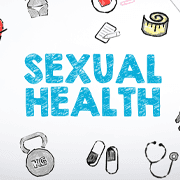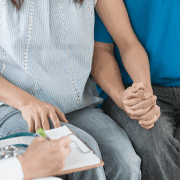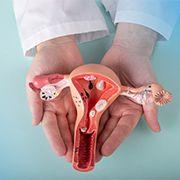Sexually Transmitted Diseases In Men
In This Article
Sexually Transmitted Diseases In Men
Ashitha Kareem
Updated on March 01, 2024
Medically verified by Dr. Arya
Fact checked by Dr. Pournami

Wellness
10 min read
You may be having a sexually transmitted disease (STD). Sounds worrisome? Please do not stress out.
It is crucial for you to be aware that sexually transmitted diseases (STDs) can affect men's health. So, understanding and managing these diseases is important.
Karepedia is here to explain different STDs, their effects, and what men can do to stay healthy.
From common infections to ways to prevent them, we'll cover everything in easy-to-understand terms.
Let's explore STDs and learn how men can take charge of their sexual health.
What Are STDs?
Let’s begin with what STDs are. These are mainly passed from an infected person to an uninfected person through unprotected sex. They are also called Sexually Transmitted Infections (STIs).
It affects people of all ages, all backgrounds, from all walks of life.
Millions of new cases of STDs are reported every year. So, you’re not alone.
New rashes on or near genitals or elsewhere in the body, swollen lymph nodes, fevers, or discharge from penis, vagina or anus could all be signs of STDs. Some STDs are asymptomatic and can only be identified via screening tests.
STD can have a bad effect on life. If untreated, they can lead to serious consequences. Hence, it is important to identify and treat them soon.
Common STDs In Men
Due to biological and social factors, men are less prone to getting STDs compared to women. Some of the most common STDs in men may not present any signs or symptoms.
Care to know what are the most common ones that could affect you? Here you go.
- Chlamydia
- Gonorrhea
- Syphilis
- Genital Herpes (HSV)
- Human Papillomavirus (HPV)
- Human Immunodeficiency Virus (HIV)
- Hepatitis B etc.
Symptoms of STDs In Men
The symptoms do not appear immediately after getting infection. There is a period between exposure and detection of disease. It is usually 20 days or less.
- Rashes, blisters, sores, or discoloration in penis or anus.
- Pain during urination or ejaculation
- Unusual frequent urination.
- Discharge that smells or is strange in colour
- The initial symptoms include:
STD symptoms doesn’t limit to pubic region .Other symptoms includes:
- Fever
- Rashes on other parts of body including mouth
- Flu like symptoms
- Fatigue
Prevention Against STDs In Men
As we all know, prevention is better than cure. So, here are the hacks that can help you keep away from STDs
- Use Prevention including condoms and dental dams
- Maintain personal hygiene
- Prevent and control other STIs. Having one STI increases chances of getting more STIs.
- Get HPV vaccines at correct intervals of time.
- Limit the number of sexual partners. Having more than one partner increases chances of getting STIs.
- Learn the symptoms of STI. Have regular checkups for STIs and HIV.
- Partner therapy: partners of person diagnosed by gonorrhoea or chlamydia are prescribed antibiotics.
- -Get vaccinated (e.g. HPV vaccines recommended at pre-teenage or below 26 years old).
 10mint
10mintSexual Health Matters: How To Maintain Your Sexual Health ?
 10mint
10mintYour Guide to Sexual Health Screening and Preventive Measures
 10 mints
10 mintsSTDs in Women: Comprehensive Guide on Symptoms and Treatments
Get a Callback Now
Transmission Of STDs In Men
Wondering how you can contract STDs? The transmission can happen due to the following:
- Unprotected sex with more than one partner
- Sharing sex toys
- Sharing needles for using drugs, or even medical negligence of reusing medical needles
- Engaging in commercial sex work.
- Sex of men with men
Diagnosis Of STDs In Men
STDs have no easily identifiable symptoms. It is difficult to diagnose the symptoms without the help from the medical staff.
Diagnosis of STD includes:
- Enquiry of medical history and potential exposure to STDs
- Physical examination to check any visible rash, blister or other symptoms
- Laboratory tests including blood, urine and/or swab tests.
- Additional Test such as visual test for HPV.
| Disease* | **Test Procedure** | *Essentials |
| ------- | ------------------ | ------------ |
| Chlamydia & Gonorrhea | Swab of Genitals ,Urine Test | Let health care know past history of anal or oral sex. Test may be negative even when these sites are infected |
| HIV | Blood Test ,Swab from inside of mouth | Window period is the time between the effect of virus and detectable antibodies. After window period antibody test can detect HIV |
| Genital Herpes | Blood Test, Swab Test ,NAAT or culture | The Viral culture test is most accurate within 48 hours. They have a high rate of false results. NAAT is fast and accurate. |
| Syphilis | Blood Test, Sample taken from sore | |
| Trichomoniasis | Swab of infected area, physical examination ,Sample of Discharge | Trich is harder to detect in men than in women. |
| High risk HPV | Visual Diagnosis, Regular screening, PAP or HPV test | No test available for men |
Treatment of STDs In Men
The guidelines provide CDC’s most current evidence-based recommendations for preventing, diagnosing and treating people who have, or are at risk for, STIs.
- Bacterial STD Treatment for Chlamydia and Gonorrhea
- Parasitic STD Treatment for Trichomoniasis
- Viral STD Treatment for Herpes, Hepatitis B, HPV, & HIV. However, unlike bacterial infections, viral infections have no known cure. Hence suppressant drugs are used instead to limit infections and symptoms. The infections may be still commutable.
Complications of STD In Men
STDs can occur without visible symptoms. Hence, the diagnosis and treatment are sometimes not done on time. Without proper treatment, many serious complications could arise.
An untreated STD can cause:
- Prostate Cancer
- Throat Cancer
- Genital ulcers
- Sterility
- Multiple organ damage (heart, kidney, brain)
- Blindness
- Weakened immunity resulting in lifetime illness.
Facts That Gay, Bisexual and other Men Who Have Sex with Men (MSM) Need To Know
Anyone sexually active is at risk of STD. But sexually active gay, bisexual and other men who have sex with men (MSM) are at greater risk.
Studies also suggest that more than half of all new syphilis infections occur among MSM.
Factors contributing to higher risk are:
- Higher rates of HIV and STD among MSM increase a person’s risk of coming into contact with an infected partner and becoming infected themselves.
- Certain behaviours – such as not using condoms regularly and having anal sex increase STD risk.
- Homophobia, stigma and discrimination can negatively influence the health of gay and bisexual men.
Lack of correct information.
Gay and bisexual men are at greater risk for Hepatitis A and B, and Human Papillomavirus (HPV). Hence CDC recommends getting vaccinated for all the above diseases.
Sexually Transmitted Diseases (STDs) are mainly passed from an infected person to an uninfected person by unprotected sex. They are also called Sexually Transmitted Infections (STIs).
The first symptoms includes: Rashes, blisters, sores, or discoloration in penis or anus, Pain during urination or ejaculation Unusual frequent urination, Discharge that smells or is strange color
Gay and bisexual men are at greater risk for hepatitis A and B, and human papillomavirus (HPV).
Source Links
World Health Organization
University of Washington Virology Research Clinic
Centers for Disease Control and prevention
Harvard Medical School
American Sexual Health Association

